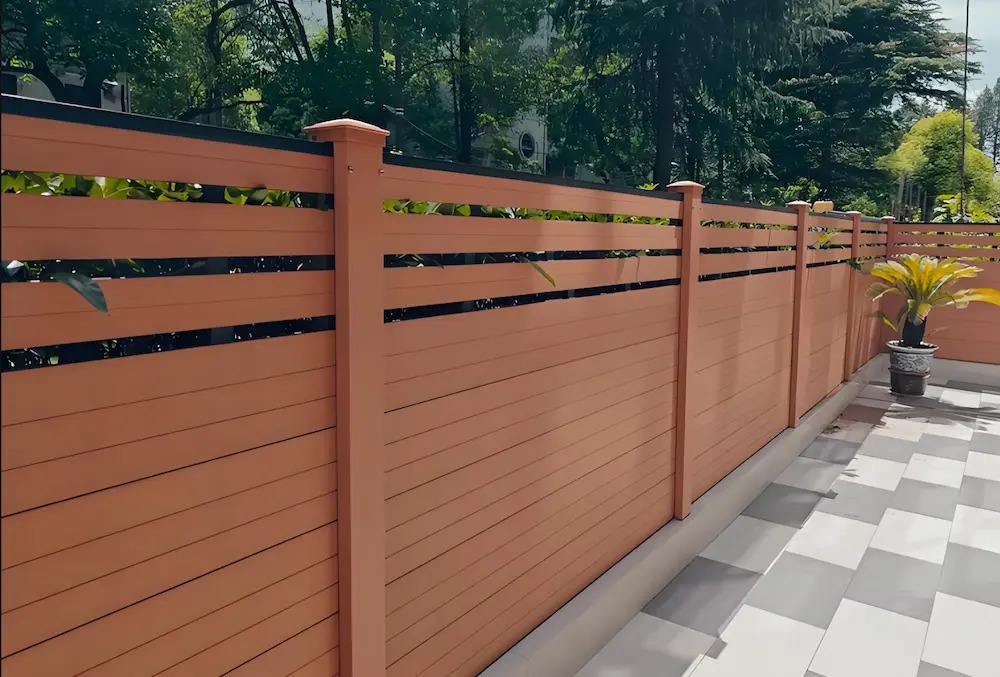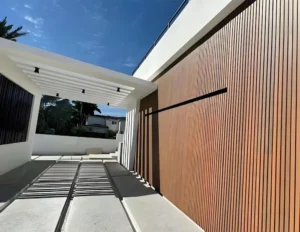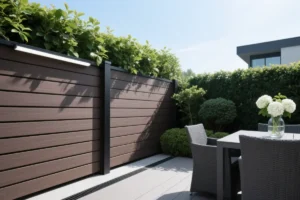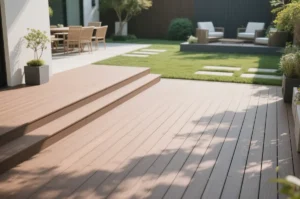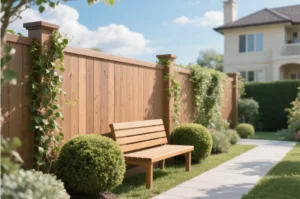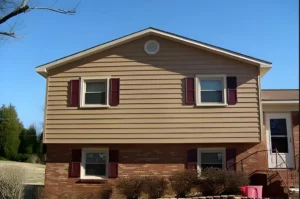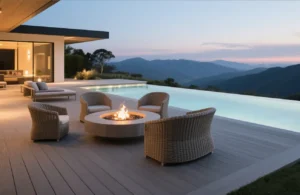When designing an outdoor space, fencing does more than mark boundaries—it sets the tone for your entire landscape. However, selecting the right fencing material can be a challenge. Traditional options often fall short in balancing beauty and durability. That’s where WPC fence boards come in. Like WPC decking and WPC wall panels, they represent a smart, sustainable solution made from advanced wood-plastic composite materials.
In this article, we’ll explore what makes WPC fence boards unique—from their material advantages to design flexibility—showing why they are an ideal choice for modern outdoor environments.
What Is WPC Fence Board Made Of?
WPC (Wood-Plastic Composite) is the core material behind WPC fence boards. It’s crafted by blending recycled plastic fibers with wood flour or wood scraps. This eco-friendly combination maximizes the use of reclaimed resources while merging the strengths of both materials.
The plastic component offers excellent waterproofing and weather resistance. Meanwhile, the wood fibers provide a natural appearance and warm texture, closely mimicking real timber. This innovative blend revolutionizes outdoor fencing by offering durability without sacrificing style.
The Drawbacks of Traditional Fencing Materials
Traditional fencing materials often bring compromises:
- Untreated wood, while initially charming, is prone to rot, mold, and warping in humid conditions. Over time, it fades and deteriorates under sun exposure, becoming a visual eyesore.
- Plastic fencing resists moisture but becomes brittle and discolored due to UV damage.
- Concrete fencing is strong but dull and uninspiring, failing to harmonize with garden aesthetics.
Homeowners often ask: Is there a material that stays beautiful for years while withstanding harsh outdoor conditions? WPC fence boards offer the perfect answer. If you want to know more about the comparison between WPC and wood, read this article WPC vs. Traditional Wood.
Advanced Protection for Long-Lasting Performance
Premium WPC fencing systems, including luxury and grooved styles, feature a protective plastic cap layer—an armor-like shield safeguarding the composite core. Earlier generations of WPC fencing lacked this layer, making them vulnerable to moisture, mold, and fading.
Modern WPC fence boards also include UV inhibitors in the surface capping. Think of it as a built-in sunscreen, helping preserve vibrant color even under direct sunlight. Cleaning is simple—just use a sponge or lint-free cloth with warm soapy water, or rinse with a hose. No frequent maintenance needed.
A Natural Look That Rivals Real Wood
Wood has long been favored for its natural charm, but it ages quickly. In contrast, WPC fence boards replicate wood’s texture and grain with impressive realism.
- Luxury WPC panels feature deep, sculpted woodgrain on one side—each groove adds depth, mimicking aged wood’s rich character.
- Grooved WPC boards resemble stacked wooden slats, offering visual rhythm and texture.
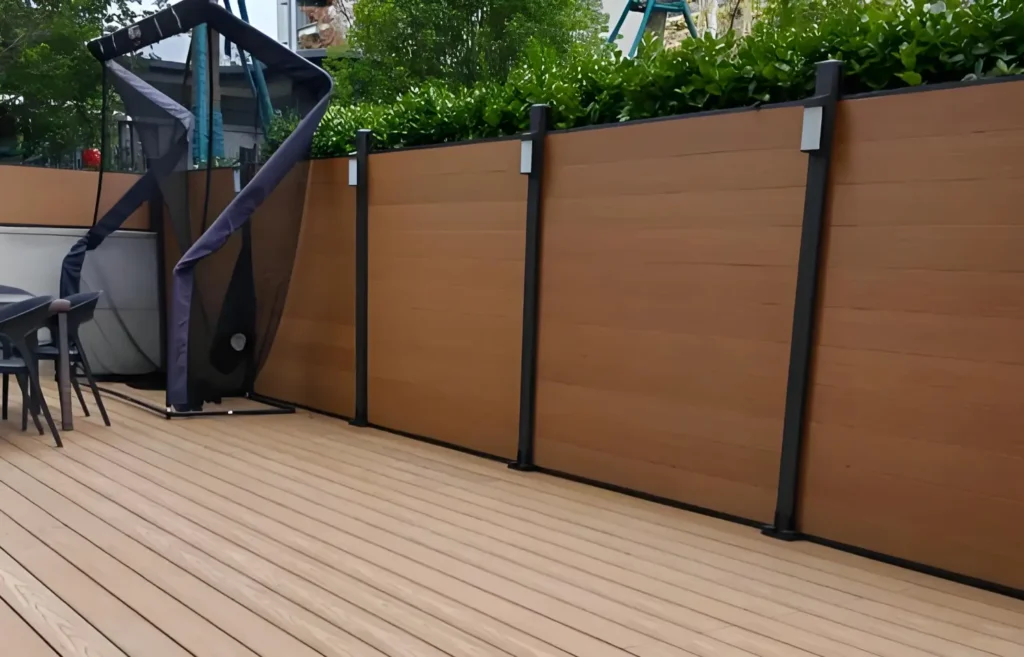
A Vibrant Color Palette to Match Any Style
Gladol’s WPC fence boards come in five beautiful shades:
- Copper Brown – With vintage charm, ideal for European-style gardens.
- Teak – Warm and tropical, creating a resort-like feel.
- Charcoal Gray – Minimalist and modern, great for contemporary outdoor spaces.
- Chocolate – Cozy and rich, perfect for welcoming garden areas.
- Classic Gray – Subtle and versatile, blending easily with plants and greenery.
These factory-finished colors eliminate the need for painting, saving time while enhancing design consistency.
Easy to Cut, Customize, and Install
WPC fence boards can be trimmed just like solid wood. If your post spacing is less than the standard 1.8 meters, simply cut the boards to fit. Gladol understands the importance of cost-effectiveness, helping users adapt new materials to existing structures with ease. If you want to install it yourself, you can do it step by step by following the guidance to Install durable WPC fence.
Strong and Flexible Fencing System
A WPC fencing system is more than just boards. The framework often uses metal posts for maximum stability—even in strong winds. Composite fence posts feature an inner metal core, enhancing structural integrity.
The boards are designed with a tongue-and-groove profile, allowing them to stack securely into matching post channels. Whether you use WPC posts or metal inserts, the boards align precisely and install smoothly. They’re even compatible with existing wood or concrete posts—ensuring flexibility for renovations or hybrid designs.
Optional Metal Screens for Custom Style
To offer even more design flexibility, Gladol provides optional decorative metal screens to replace the top two WPC panels. These powder-coated screens match the fence color and are available in four styles:
- Leaf Pattern – Brings nature into your yard with dappled light and organic shapes.
- Linear Design – Adds a modern, minimalist flair.
- Contemporary Art – Turns your fence into a bold design statement.
- Geometric Symmetry – Offers rhythm and elegance with vibrant, symmetrical patterns.
These panels improve airflow, allow more sunlight in, and add architectural interest—making the fence feel more open while boosting visual appeal.
Designed to Fit Every Outdoor Space
Every outdoor space is unique. That’s why Gladol’s WPC system including WPC wall panels, decking, and fences, is designed to adapt—not the other way around. Whether you have a compact courtyard or a large garden, you can create the right combination of privacy, strength, and beauty.
Conclusion: A Smart Investment for Sustainable Fencing
WPC fence boards, made from recycled plastics and wood fibers, combine the durability of synthetic materials with the natural beauty of wood. Their protective surface, customizable sizing, vivid colors, and modular system design make them a standout among fencing options.
Choosing Gladol’s WPC fence system means investing in a long-lasting, low-maintenance, and visually appealing solution. It’s not just a fence—it’s a refined addition to your outdoor lifestyle.

